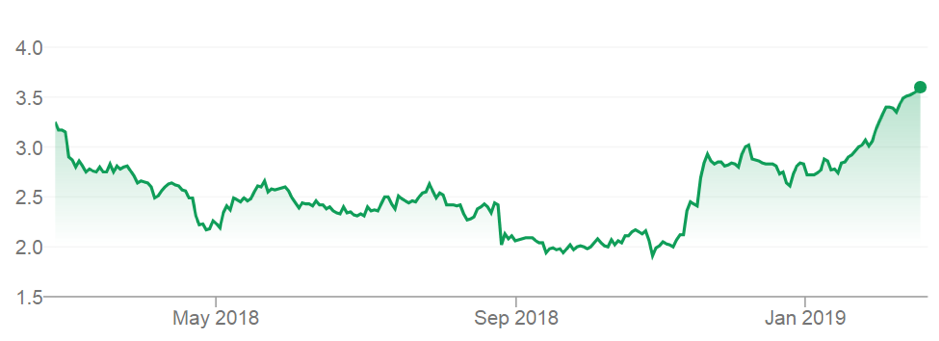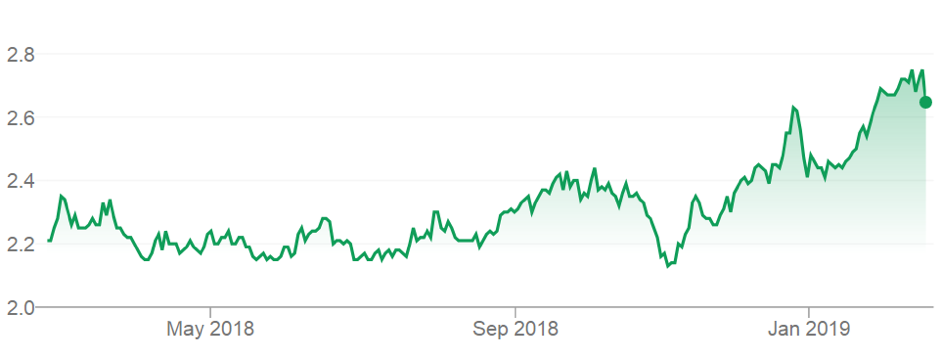The share market’s knack for overreaction is alive and well in the childcare sector. This time last year, key childcare-related stocks were under immense pressure amid fears of centre oversupply. Now some stocks and trusts have soared. It’s time to take profits.
Consider sector leader, G8 Education (ASX Code: GEM). Investors could not get enough of G8 when it soared to $5.58 in late 2014, a tenfold increase in three years. G8’s story was compelling: rising childcare demand and an industry ripe for consolidation.
Gains were short-lived. G8 hit a 52-week low of $1.88 late last year, as concerns grew about sector overcapacity. A record number of childcare centres opened in Victoria and some other states were not far behind, as the industry’s favourable outlook attracted new entrants.
I heard stories of childcare centres opening well below capacity and parents moving children to cheaper facilities because new childcare places were available. Also, parents were cancelling childcare over summer holidays, knowing they could easily find a spot in the New Year.
At the same time, high childcare fees and a plateauing of the Federal Government’s childcare rebate for several years weighed on industry demand. Occupancy rates averaging 75% were common at many centres, meaning a quarter of the assets were idle. Some centres had much lower occupancy rates because there was too much supply. The industry’s challenges grew daily and the market responded with lower share prices.
G8’s smaller rival, Think Childcare (TNK), fell from about $2.50 in early 2017 to a low of $1.10. A newer-listed entrant, Mayfield Childcare (MFD), hit 83 cents last year from its $1 issue price.
Australian Real Estate Investments Trusts (AREITs) that invest in childcare properties were also affected. ARENA REIT (ARF), a long-time favourite property trust of mine, had a flat year by its standards, its unit price range bound for much of 2018.
Sector recovery
What a difference a few months make. Childcare stocks and property trusts rallied sharply in November on signs that industry overcapacity – the market’s biggest fear for the sector – was improving. Increased childcare demand after the introduction in July 2018 of the Federal Government’s Child Care Subsidy also scratched the market’s itch to buy childcare stocks.
G8 has almost doubled from its 52-week low to $3.60 in less than six months. Think Childcare is up 63% from its low. Mayfield Childcare is back above its issue price at $1.10.
Chart 1: G8 Education

Source: ASX
Childcare AREITs have soared. The well-run ARENA REIT is up 25% from its 52-week low. Charter Hall Education Trust (CQE), which last year acquired Folkestone Education Trust, has also leapt in the past few months, confirming the childcare sector’s return to favour.
Chart 2: ARENA REIT

Source: ASX
Rally overdone
After the huge rally since November, some profit taking in G8 and ARENA is warranted. Note the emphasis on “profit taking”. Neither stock is wildly overvalued after recent gains and ARENA REIT still deserves a place in income portfolios given its expected yield of 5%.
An average share price target of $2.92 for G8, based on the consensus of 11 broking firms, suggests the stock is around 20% overvalued. Morningstar’s fair value is $3.50.
Like many small REITs, ARENA is not well covered by brokers. Four firms that follow it and contribute to consensus forecasts (too small a sample to rely on) value it at $2.47, implying ARENA is about 6% overvalued at the current price. I would hold ARENA for now.
G8 is a different proposition. More will be known when the company reports its full-year earnings on February 25, but my hunch is the result will be a catalyst to take profits. Expectations are high after G8’s soaring gains this year and there is scant room for disappointment.
Look for confirmation from G8 that industry oversupply is slowly improving and more evidence of better occupancy rates at its centres. But not enough to justify a sharp increase in new property development to fuel faster earnings growth and spark the next price re-rating.
Also, the market may be underestimating the demand side of childcare in FY20. If the national property price correction continues at the current pace, the Australian economy will be under growing pressure as consumers feel poorer and less inclined to reduce their savings. High household debt and declining consumer sentiment will force many people to spend less.
Childcare bulls could argue that a weakening economy will encourage more women to seek part-time work to boost household income, thus supporting childcare demand. But that may not offset the response from current childcare consumers (parents) who need to find quick savings.
Long day-care at a childcare centre can average more than $100 a day, depending on the suburb. Some centres in ritzy suburbs charge up to $150 a day and even cheaper suburbs can average $100. Many low and middle-income families should be better off under the Federal Government’s childcare reform, but childcare remains a significant cost burden for families.
Thus, more families will look to lower childcare costs in FY20, as household budgets are pressured. Some could seek cheaper childcare centres and take advantage of industry oversupply and lower occupancy rates – a trend in recent years. Other could reduce the amount of childcare used over holiday periods and during the week.
If the economy sours, some parents will ask their extended family to take on more child-minding duties, to save money. Thanks goodness for grandparents who can do an extra day or two of child-minding each week to help their children when they are under financial pressure.
Attractive long-term fundamentals
To be clear, the childcare industry still has terrific growth prospects. Business forecaster IBISWorld expects the $13-billion industry to deliver annualised growth of almost 4% between 2019 and 2024, comfortably above the Australian economy’s expected growth rate.
Approximately 1.3 million children aged 12 or under attended some form of government-approved or government-funded childcare service in 2018, notes IBISWorld. More women returning to the workforce earlier after childbirth and dual-income families are well-established trends and long-term drivers of childcare demand. Population growth is another tailwind as it means more families needing childcare services.
The industry remains fragmented with around 1,800 operators. G8 and Goodstart Early Learning together have only 15% market share, on IBISWorld numbers. However, the market is focused on the next 12 months and for childcare operators that means continued industry oversupply (albeit improving) and a possible weakening of demand (notwithstanding greater government assistance). All at a time when childcare stock and trust valuations have soared after a few years of heavy losses.
Long-term investors in G8 and ARENA have a case to hold on to their stock. Those who benefited from the recent rally could take some profits with a view to buying back G8 and ARENA at lower prices in the next six months.
Tony Featherstone is a former managing editor of BRW, Shares and Personal Investor magazines. The information in this article should not be considered personal advice.. All prices and analysis at 20 February 2019

